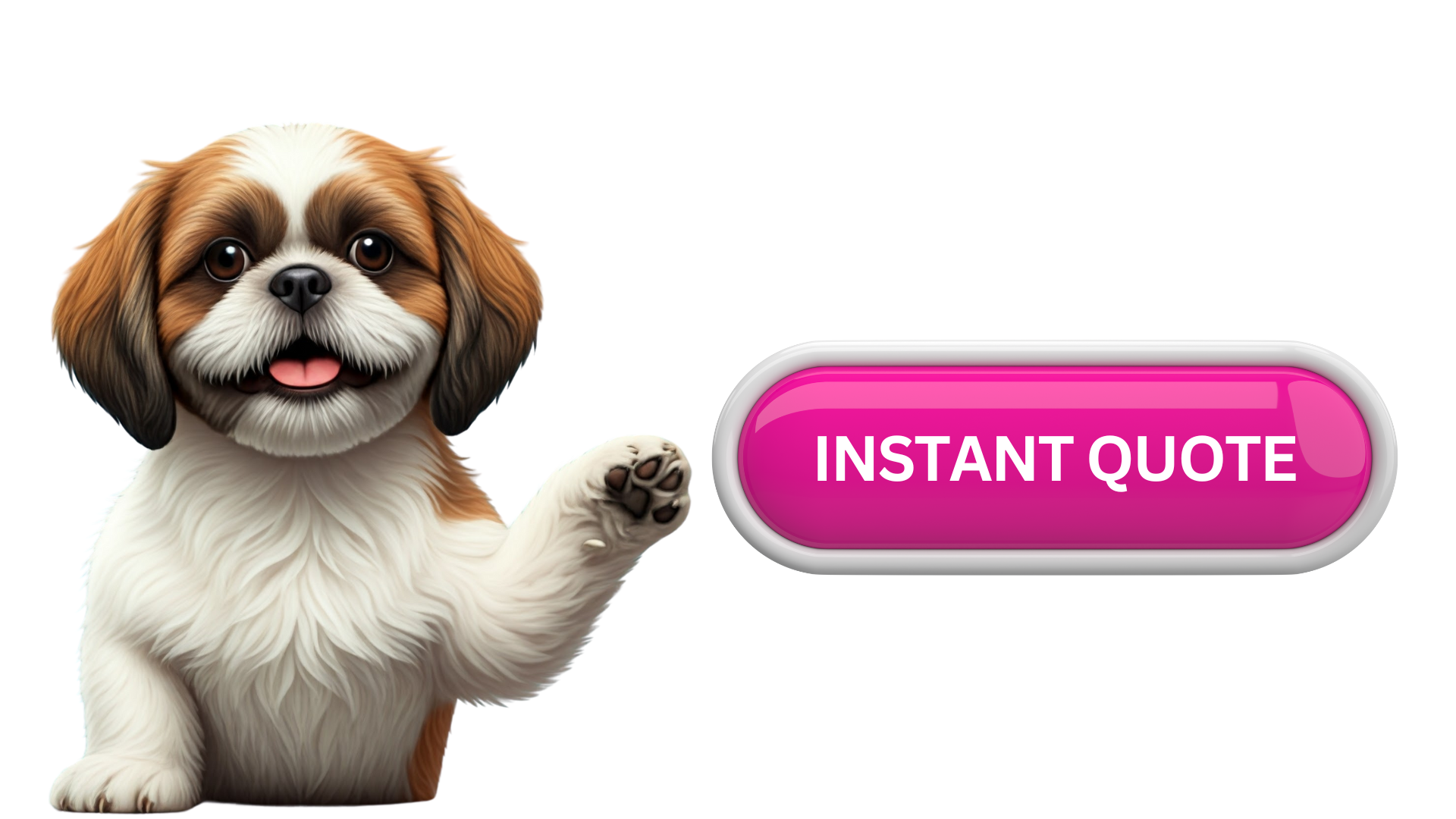Understanding Dog Body Language: What Your Dog Is Trying to Tell You

Why Dog Body Language Matters
Dogs, like humans, have their own way of communicating. While they can’t speak in words, their body language is full of rich and expressive signals that convey what they’re thinking, feeling, or experiencing. Understanding these cues is essential to creating a deeper connection with your pet and ensuring their well-being. By learning what your dog is trying to tell you, you can respond to their needs, build trust, and avoid misunderstandings.
In this blog, we’ll explore the key components of dog body language – from their tails to their ears – and help you decode what these signals mean. Let’s dive into the fascinating world of canine communication!
The Basics: Key Signs of Dog Body Language
Before we dive into specific parts of your dog’s body, let’s start by understanding the general principles of dog body language:
1. Posture: A dog’s body position often indicates how comfortable or threatened they feel in a particular situation. A relaxed dog will have a neutral stance, while a tense or defensive dog may be stiffer.
2. Movement: The way a dog moves can give insight into their emotions. For example, a wagging tail isn’t always a sign of happiness – the speed and posture of the wag can convey excitement, anxiety, or even aggression.
3. Eyes: Dogs communicate through eye contact, too. Soft, relaxed eyes often indicate contentment, while wide, unblinking eyes could signal fear or aggression.
4. Mouth: A relaxed mouth can show comfort, while a closed or tight mouth could indicate that your dog is uncertain or stressed.
What Your Dog’s Tail Is Saying
The tail is one of the most expressive parts of a dog’s body. Its position, movement, and speed can tell you a lot about their mood. Here are some common tail signals to look out for:
- Wagging Tail: A wagging tail doesn’t always mean your dog is happy. If the wag is slow and wide, your dog may be feeling calm and friendly. A fast, stiff wag can indicate excitement, but if it’s raised high and stiff, it could be a sign of aggression or dominance.
- Tail Between Legs: If your dog is tucking their tail between their legs, it usually indicates fear or anxiety. They may be trying to protect themselves or retreat from a situation.
- Neutral Tail: When a dog’s tail is in a neutral position (not too high or low), they are likely relaxed and feeling comfortable in their environment.
What Your Dog’s Ears Are Telling You
Ears are another critical indicator of your dog’s emotional state. Pay attention to the way your dog’s ears move and position themselves:
- Ears Up and Forward: This typically signals that your dog is alert, excited, or curious. They may be paying attention to something or someone.
- Ears Back: When a dog’s ears are pulled back, it can indicate fear, submission, or uncertainty. They may be feeling anxious or defensive.
- Relaxed Ears: If your dog’s ears are in a relaxed position, it usually means they are calm and comfortable.
Understanding Your Dog’s Eyes and Facial Expressions
A dog’s eyes can give you a lot of information about how they’re feeling. Pay close attention to their eye movement and facial expressions:
- Soft Eyes: When your dog’s eyes are soft and relaxed, it typically indicates they are calm and content. Their face will appear gentle, and they may even blink slowly.
- Wide Eyes: If your dog’s eyes are wide open, it may indicate fear, surprise, or even aggression. In this state, your dog could be preparing for a defensive reaction, so proceed with caution.
- Squinting or Half-Closed Eyes: This could indicate relaxation or that your dog is feeling content and trustful.
- Raised Eyebrows: Dogs can raise their eyebrows to show curiosity, confusion, or even excitement. It’s often a sign of interest in their environment.
The Importance of Dog Posture
Your dog’s overall posture can also tell you a lot about their emotional state. Here are a few key postures to look out for:
- Relaxed Stance: If your dog is standing or lying down with a relaxed posture, it usually means they are comfortable and secure. Their body will appear soft and loose.
- Stiff Posture: A dog that is standing rigidly or moving stiffly may be feeling tense or defensive. They may be anxious, fearful, or preparing to react to a situation.
- Play Bow: When your dog lowers their front end and raises their rear, it’s a sign that they want to play. This is a clear invitation for fun and interaction.
- Hunched Back: A dog with a hunched back is usually feeling frightened or submissive. They may be trying to make themselves appear smaller or less threatening.
Common Dog Behaviors and What They Mean
Understanding body language goes hand-in-hand with interpreting common dog behaviors. Here are some typical actions and their meanings:
- Barking: Dogs bark to communicate a range of emotions – excitement, anxiety, warning, or simply to get your attention. The tone and frequency of the bark can help you determine its meaning.
- Whining: Whining is often a sign of distress, anxiety, or a desire for attention. It’s a way for your dog to let you know that something is bothering them.
- Rolling Over: A dog that rolls over onto their back is signaling submission, trust, and comfort. It can also indicate that they want a belly rub or affection.
- Nose Nudging: When a dog nudges you with their nose, it’s often a sign of affection, a request for attention, or a way to invite interaction.
- Pawing: Dogs often paw at you to seek attention or indicate that they want something, such as food or a walk.
What to Do with the Information Your Dog Is Giving You
Understanding your dog’s body language helps you respond appropriately to their needs. Here are some tips on how to use this information:
- Respect Their Space: If your dog displays signs of fear or discomfort, like a tucked tail or stiff body posture, it’s important to give them space. They may need time to calm down or assess the situation.
- Reassure Them: If your dog seems anxious or fearful, use a calm voice and gentle gestures to reassure them. Avoid sudden movements, which could escalate their anxiety.
- Encourage Positive Behavior: When your dog shows signs of happiness or excitement, like a wagging tail or play bow, engage with them positively. Offer praise or a toy to reinforce the behavior.
- Know When to Seek Help: If your dog’s behavior becomes consistently aggressive, fearful, or abnormal, it might be time to consult a veterinarian or professional dog trainer. They can help you understand underlying causes and provide solutions.
Conclusion: Building a Better Bond with Your Dog
Understanding dog body language is key to building a better relationship with your pet. When you learn to interpret their signals, you can provide them with the care, attention, and reassurance they need, strengthening the bond you share and creating a more trusting, enjoyable relationship. By paying attention to cues like their tail, ears, posture, and facial expressions, you’ll be able to respond to their needs in a more compassionate and informed way. Each dog is unique, so take the time to observe and understand your dog’s individual body language to ensure they feel happy, safe, and loved.
If you’re ready to build a stronger connection with your dog, start by paying attention to their body language today. And remember – when in doubt, trust your instincts, and always be patient with your furry friend.
If you also want to keep your yard clean and safe for your dog, Clean Paws Scooping is here to help. Get a free instant quote today, and let us handle the mess so you can focus on enjoying your time with your dog!
Request a Free Quote Today!
If you want to make sure your yard stays clean while you enjoy these daily walks with your dog, we’re here to help. Our dog waste removal services make keeping a tidy yard simple and hassle-free. Reach out to us today for a free quote and let us do the dirty work, so you can focus on enjoying time with your furry friend.




